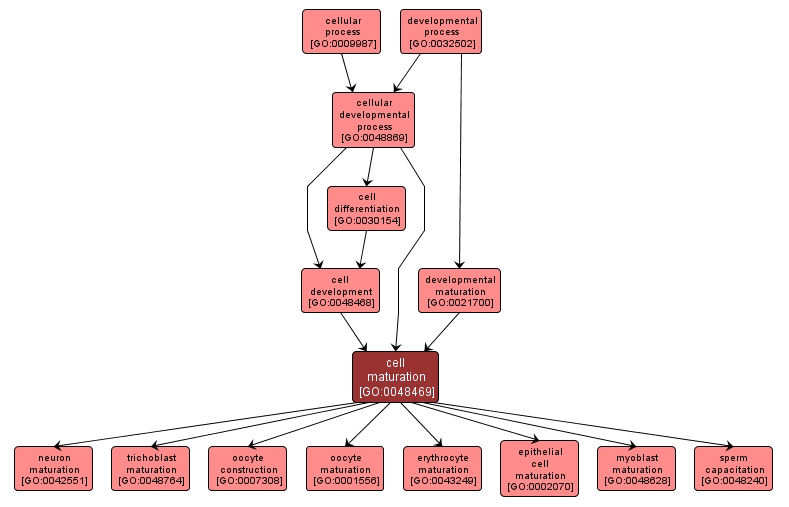GO TERM SUMMARY
|
| Name: |
cell maturation |
| Acc: |
GO:0048469 |
| Aspect: |
Biological Process |
| Desc: |
A developmental process, independent of morphogenetic (shape) change, that is required for a cell to attain its fully functional state. |
Synonyms:
- functional differentiation
|
|

|
INTERACTIVE GO GRAPH
|














